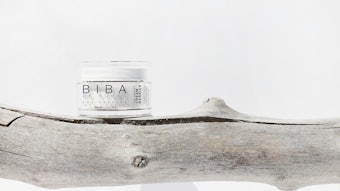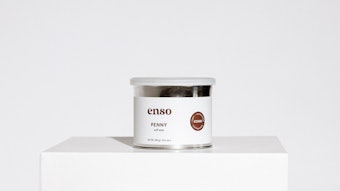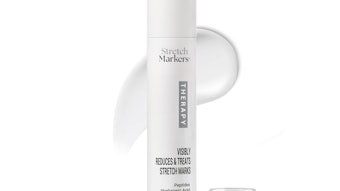
The best thing about luxury? You don’t need it after all—hooray! This is literally the definition of luxury: something you don’t need. Recent huge shifts in cultural values point away from waste, excess and extravagance, and these shifts are also now presenting skin care professionals with the opportunity to reinvent their businesses and the spa industry itself.
Skin care professionals who still market their products and services as luxury, pampering and indulgence are understandably concerned about their future. But here’s the epiphany the industry has been waiting for: Skin health is not a luxury. Health is never frivolous. Skin health practices are actually a proactive form of fitness and informed self-care. Presented in this manner, the expertise of the skin therapist is an excellent investment for your clients.
The challenge for today then becomes how to offer skin care in newly relevant ways. Clients today demand more value. This is based not only on economics; it’s also based on the fact that people are generally time-deprived. If there’s one luxury everyone still covets, it’s more hours in the day. This means every inch of floor space and every minute of every interaction you have with clients has to generate revenue.
Less is not more—it’s just enough
Visionary filmmaker and author David Wann captures the excessiveness of American culture in a single word: affluenza. The primary symptom of affluenza is believing bigger is better, and many skin care centers, spas, salons and other businesses are guilty of promoting this idea. Actually, more is truly only just more. But what’s needed is not more. In terms of what you offer your clients, you simply need what is essential and excellent—that’s enough.
Begin by having a look at your menu. Is it huge? Enormous? Gigantic? You get bonus points for every time the words luxury, pampering or indulgence are mentioned in the descriptions of the treatments. Other danger signs include chocolate, rose petals and artwork featuring goddesses. These motifs do not deliver results, which is what your newly motivated clients demand.
Start at the beginning, by getting back to what your clientele does actually want. When you really start asking, you’ll learn they want results that are confidently shaped by your expertise. Clients typically are most concerned about fewer breakouts, more elasticity, less evidence of sun damage and more evenly distributed pigmentation.
Your first step must be to accurately discern their key priorities. Next, you must examine and evaluate the client’s skin, as well as lifestyle factors. Finally, develop an integrated plan of action for both the treatment room and the client’s home regimen, with an emphasis on effective products. There’s no great mystery. The only real mystery is why more skin care professionals don’t do this, as it is truly the approach that builds solid loyalty and revenue.
In fact, with this in mind, you don’t really need to offer a preset menu. Base your recommendations purely on what’s happening with the client’s skin at that moment—not what happens to be on a preprinted menu. As part of the skin analysis process, a skin care therapist must note existing conditions as well as products used and purchased at each visit, but this is by no means a rigid blueprint for the future. Each time the skin is examined, it will reveal new information. This evolving information is the basis for genuinely customized prescriptive product recommendations and treatments, and customization uniquely empowers you to deliver the expected results.
When clients ask if they can see your menu—and they will ask—train yourself and your staff to say, “We have no preset menu. We customize every treatment to address exactly what your skin condition requires at the time you visit us.” Now that’s fab—not prefab.
Printing menus also can become costly, especially when the tool is not highly effective. Brainstorm with your team about better ways to spend those marketing dollars. Ongoing education is, of course, primary, and creative sampling beyond foil packets is also a wise investment. However, something not recommended is discounting, as it damages your brand integrity. Instead of reducing the price, add value, such as a 10-minute aromatherapy touch treatment as a gift-with-purchase.
Client-shaped business
Look at your business with fresh eyes. The reception desk, the waiting area ... chances are, these areas could be better used to generate revenue, especially by drawing walk-in clients.
Going back to the added-value touch treatment for the scalp, hands or feet, this simple concept can turn your business around, because it can be offered anywhere in your facility with no disrobing required or appointment needed. It’s brief, it’s engaging and it gets people interested in buying products, as well as potentially booking treatments. It makes the skin care experience immediately accessible, and this is essential to building your business.
Your reception desk, likewise, may take on new life as a skin care sampling area where clients—including walk-ins—may sit comfortably, use a personal steamer, enjoy a complimentary water or tea, and be served samples of products. This calls for more insightful cross-training of your reception team. When the front of the house becomes more dynamic, all your players must expand their skills in the probing of customer needs and prescriptive retailing.
Even more radical, consider creating a treatment area that does not demand privacy, disrobing or an appointment. On your Web site and whenever you speak with clients and potential clients, describe this accessible, user-friendly area as a focused mini treatment zone where 20-minute services are given to address a single, specific skin issue. The particular problem to be solved could be a sudden comedone or deeply fatigued, dehydrated skin following air travel. A focused mini treatment zeroes in on a single, pressing matter and offers instant relief and immediate results—exactly what people want right now.
Everything counts, all the time
Even though your clients may be feeling more confident about the economy and might be willing to spend a bit to prove it, global statistics confirm most everyone everywhere is desperately short on time. Time is the new money. It’s hoarded, squandered fitfully, envied, felt guilty about, and everyone is always trying to make more of it.
When you grasp this, the day of beauty concept still promoted by many skin care centers and spas seems fairly outdated. Even destination spas are building more activities into their offerings. This is the direct result of clients expressing a desire for engaging, interactive features alongside conventional spa services. Today, for instance, cruise ships feature running decks, gyms and even rock-climbing walls, because simply being in the middle of the Caribbean with a mai-tai in your hand isn’t enough anymore. Looking at time as the new currency opens the door to new possibilities for your business.
Another aspect of the old beauty paradigm that may stand as an obstacle between you and potential growth is the appointment book. Especially because people are time-deprived, they may hesitate to call. They fear being strong-armed into making a 90-minute commitment, or, worse yet, getting roped into a series of such commitments. They reach for the phone, but they just can’t do it—and may head to the nearest beauty supply store instead for a do-it-yourself home microdermabrasion kit or something equally ghastly.
Building more accessibility and brevity into your marketing approach also will appeal to two types of clients in particular who represent your future: men and teens. Typically, men won’t book ahead and don’t want a big fuss made around them. And teens are impulsive, so they’ll also likely not be in a pre-planning mode. By removing obstacles and encouraging more walk-in clients, these newcomers to professional skin care may become your most loyal clients yet.
Shocking surprise
Here’s the most shocking news—less may actually be more fun. For example, women in midlife may find they are thrilled to become empty nesters. Living a chic, smart, streamlined life in a fabulous apartment now that the kids are grown reveals itself as a welcome change to them. It’s simpler and more freeing. Much less laundry, too.
This was also the appeal of the greatest revolution in haircutting, led by Vidal Sassoon. Prior to Sassoon, women had worn their hair unwashed, teased, painstakingly pinned and hardened into a rigid, high-rise helmet. Sassoon irreverently pulled out the pins, pushed their updoed heads under the tap, washed out the lacquer and cut away. He snipped the hair into a shockingly natural, yet modern bob, which moved with breeze and swung with gravity. It was an absolute a revolution—hair that moves!
Sassoon also introduced a new idea: Women could and would wash their own hair, every day perhaps, rather than waiting two weeks or more to have it washed out at the salon. This cultural revolution had nothing to do with poverty, hardship or self-deprivation. It had to do with modern women wanting to spend less time under the dryer.
Initially, hairdressers panicked when they realized women would not be coming in for their biweekly wet-and-set. But panic soon turned to profits when hairdressers realized they could sell bottles of shampoo rather than simply selling services. Selling a bottle of shampoo and conditioner required less than 10 minutes versus an hour or more for a conventional styling appointment. Product marketing trumped the labor-intensive service model, and today this transition applies to skin care. Skin therapists once relied purely upon treatment technique, but now you must bring your expertise to the retailing of products as well.
Professional consultation and treatment, as with hair care, are still the core, but the treatments don’t need to be as elaborate as they once were—and perhaps not even as frequent. The positioning and selling of retail within the professional setting is the most significant opportunity to come along in the history of the skin care industry.
Shedding an ungainly, unwieldy, high-maintenance coiffure truly is energizing. You can experience the same sense of being set free once you shed the idea that luxury is what clients want. Luxury never really belonged in the skin care profession to start with. Now shifts in global consciousness make it an impossibility. Embrace this—it’s your invitation to create the best skin care ever.










